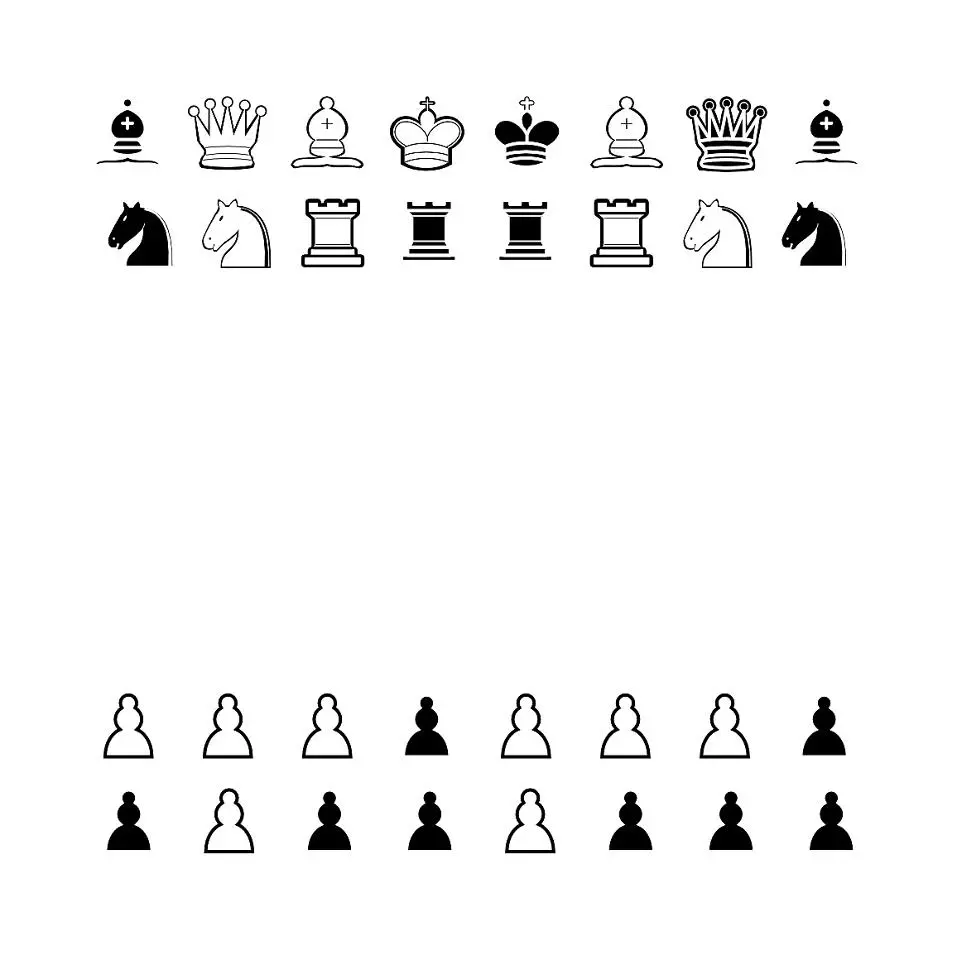They think protecting drivers cars from scratches is more important than protecting pedestrians from getting hit, so they make the sidewalk part of the “clear zone”
Physical design is not neutral.
Physical design is an expression of our values.
Saw an example of correct guardrail usage today, with the overgrown path that some other commenters were worried about.

(Lincoln Highway Hackensack River Bridge in Newark)
Let me tell you one thing, I would 100% rather ride on this overgrown sidewalk than on the shoulder of the 55mph highway without a shoulder. This is the official bicycle/pedestrian bridge crossing. I wasn’t sure whether the bridge path is even open or exists, but it does and there were even other people using it. (There is a second mesh fence on the embankment side, more so to protect the bushes than to stop you falling over.)
And then take a look at this other beauty today:

(Weequahic Park Drive, New Jersey)
Correct guardrail usage AND perfectly maintained path! Alas, pedestrian only, but not a problem to ride on 25mph street. Proof that putting the guardrail before the sidewalk is perfectly possible, both legally and practically. (There is a lake down the embankment. Don’t walk into the lake.)
I mean, I get where this post is coming from, but they didn’t build guardrails along every single street and deliberately put them behind the sidewalks. They put it there because behind it is a steep dropoff.
It was never about “pedestrian bad”, the guardrail wouldn’t be there at all if it wasn’t for the hill. Same thing with the parking meters others are mentioning. It’s not because the meters are more valuable or whatever, it’s because replacing them is expensive. Could they have put it in front of the sidewalk? Sure. But I’d bet the sidewalk was there for a while before the rail (plus the fact that there’s a sidewalk at all is surprising, in the US)
I get the point this is going for, but don’t forget, narrative manipulation can, and is, done by anyone.
The bigger issue I see here is that pedestrian access received exactly 0 minutes thought when this road was built, even though there’s clearly enough foot traffic to form a desire path on the patch of grass on the left side of the picture. That doesn’t happen without foot traffic, but not only is there no pedestrian crossing of any kind, but there isn’t a foot path on the island on the left, even though there’s a footpath leading up to it that just ends without anything to connect to.
What do they think people would walk there for? To just stop at the intersection and turn back?
In this case, and I’m guessing in many cases like it, it looks like the rail’s there to prevent the vehicle from driving into a ditch or other obstacle.
This is the correct answer. Guard rails are to prevent vehicles from going down steep embankments or other hazards. They can be used for separating traffic from walkways, but I don’t think there’s been any studies into the efficacy of doing so.
The guardrail can serve the don’t-drive-off-embankment function equally well positioned before the sidewalk. The problem is when an out-of-control car strikes the guardrail at a glancing angle, it takes a long time (by design) to grind down to a stop. This creates a bowling alley effect. The guardrail keeps the speedy car centered right on the sidewalk. Any human bowling pins are toast. Some of the most horrific traffic death videos I’ve seen involve that. Whole families wiped out.
I mean, you’re not wrong, except it’s not to keep the cars from getting scratched. It’s there to keep the car from going off into the ditch. It also prevents pedestrians from walking off the edge. If there was no slope there, then there would be no guardrail at all. We don’t typically put rails between roads and pedestrian walkways because it would prevent pedestrians from crossing the street. If the rail were closer to the road, the foliage would probably overtake the walkway.
I agree that we should make our communities more walkable, and I agree that safety measures should prioritize the safety of people over inconvenience or the damage of property. But we should understand and accurately describe the reason for the current system, lest we be dismissed entirely.
The problem is once you put people on this path of playing the victim, they see everything through the lens of being personally wronged. They incorrectly attribute all attributes of everything, eventually, to someone attempting to harm them in some way. Thankfully this community still has their wits about them, but I see this happen everywhere on the internet.
The internet also just has a general problem of burying nuance in preference to big simple opinions.
If also has a habit of treating anyone who cares about nuance as being a pedant and derailing because of it.
Usually the accusation “you know that’s not what they meant!” Anytime is pointed out that the words people use in an argument don’t actually define the opinion or argument they are missing
Valid.
The foliage thing is nonsense. The guardrail does nothing to stop plants from growing. And the guardrail ends at the crossing area anyway. So I think OP has a point here.
Agreed, and with the design of some of our roads, maybe its a good thing to discourage certain pedestrian crossings. It isn’t fair pedestrians may have to walk a significant extra distance to cross, but there are also some sections of road like curves and merge lanes that are more dangerous to cross illegally.
Right, but a mower isn’t going to go on the other side of a guardrail to clear it, and people aren’t going to walk there if it’s all overgrown.
I don’t see any reason it couldn’t? Sidewalks require maintenance. If we choose not to maintain them then they won’t be usable. The guardrail is barely relevant to that.
Have you seen how a roadside mower works? Because a guardrail between the walkway and the road would definitely impede that. And then for ada compliance, you’d need to make sure the rails are finished on both sides, and there are sufficient gaps at the crosswalks and curb cuts. And, you’d still need some sort of protection on the ledge side to prevent people from falling down into the bushes.
I mean, yeah, unlimited budget and effort, you could make that walkway much better. You could pave the whole thing and level the ground so there is no ditch and no trees. Plant some gardens for pollinators, and put in a water feature to keep things cool. Build a playground and one of those moving walkway conveyors they have at airports. Ice cream and blowjobs for everyone, while we’re at it.
The way it is now protects cars and people from the ditch, and is easy and cheap to maintain. Hardly any sidewalks anywhere have guardrails along the curb to protect pedestrians, because most pedestrians are hit where they cross the street. Even if a car jumped the curb and hit the rail, it’s unlikely people would be standing in that exact spot, and how often does that happen anyway?
If you want to improve the walkability shown in the picture, you’d do better putting in more crosswalks, signals, signs, and stops to permit pedestrians to cross the street more safely.
They could definitely design a mower that is able to reach over the guard rail. We could also just send a different mower to do the gaurd rail sections.
Of course they have those. They could have a guy go out with scissors, or replace all the grass with marshmallows and replace them daily when the animals eat them. Good for jobs, good for the animals, and good for me, the municipal marshmallow supplier!
Mowing is like one small part of it, and this configuration allows it to be done with any equipment.
Has anyone been struck by a car here? Have any car accidents happened here at all? What’s the speed limit on the road? Is it near a school or a park or a playground for blind children? Putting a safety rail between the sidewalk and the road is inconvenient for many reasons. Of course it can be done, and safety is always going to be inconvenient.
It was inconvenient to put a rail on the far side of the sidewalk. They did it because the need for safety outweighed the inconvenience of it. Cars and pedestrians could fall down the hill, and it would make accidents worse.
I mean, what are we even talking about? Having a second guardrail would make the sidewalk harder to navigate, and would obstruct the view of drivers turning the corner looking for people crossing the street. The most obvious need is for a crosswalk and additional signage.
Now do the stoplight post in the background.
They mean that they put the guard rail on the other side so it’s less likely a car with get scratched by accidentally rubbing up against the rail by getting too close if they aren’t paying attention. Instead they will just run over a pedestrian. Of course the rail is there to prevent them from going into the ditch, but it would do that either way whether it’s on one side of the walkway or the other.
And the foliage would take over the walkway no matter where the rail is, there’s no root barrier or anything, so they still need to maintain the vegetation with landscape crews anyway.
Rails preventing pedestrians crossing the street would probably also be a good thing because usually they are on a corner/curve which would be very dangerous area to cross with low visibility, they can easily make a gap in the rail at a crosswalk when the road straightens out.
They very much meant to protect from the branches scratching the cars
Maybe pedestrians shouldn’t be crossing busy roads unless at designated crossings. Additionally, if they are going to jaywalk, having the barrier would at least ensure they have some kinda bare minimum physicality in order to hop over the barrier.
And seriously, how often has a vehicle guard rail been the deciding factor in a pedestrian falling down the ditch?
Zoom in.
What are you trying to show me?
This is a designated crossing. It’s just really poorly marked, which is far more dangerous than the lack of a physical barrier between the sidewalk and the road. Crossing the road here would not be jaywalking.
Oh yes, I was speaking about the idea of guard rails and sidewalks in general, not this specific intersection. This particular intersection looks stupid for several reasons, including that sidewalk that cuts across without any markers to show a crossing. In fact I’d go as far as saying this isn’t even a crosswalk, it’s a sidewalk with an expectation of teleportation since there’s nothing painted on the road.
I think people don’t understand how a guardrail works. If it were on the other side, it still likely wouldn’t protect any pedestrian. They’re made to collapse if you run into them, not stop you instantly. If you hit this, it’s going to go outwards several feet, to slow the vehicle down slowly instead of instantly. This means if it’s on the other side the vehicle is still going onto the sidewalk.
Concrete barriers can protect a walking path, but not a guard rail.
Ill take getting hit by the deforming guardrail and being pushed away over being pinned between the car and the guardrail. They could also design a guardrail that is more rigid. We protect drivers enough already, we shouldn’t comepletely throw away pedestrian safey because some driver cant keep their car on the pavement.
I’ve also seen many bent guardrails from traffic accident and unless hitting it at one of the ends, the deformation is 2-3 feet max for most cars unless going excessive speeds. There would still be room for a pedestrian to be safe if we provided that space between the guard and the sidewalk.
They could also design a guardrail that is more rigid. We protect drivers enough already, we shouldn’t comepletely throw away pedestrian safey because some driver cant keep their car on the pavement.
Again, yes. Concrete barriers do this. I’m not disagreeing we should be protecting pedestrians, just that a guardrail isn’t the answer.
To be fair, if pedestrians existed on those roads, they might want to cross it.
And what story does this tell?

Is that a bicycle path and a dirt running track, or is the desire path in the dirt the official bicycle route and the side road behind the guardrail is for horses or golf carts or something?
The path closest to the road is the footpath. The other path is the cycle path. They put the guardrail in between for some reason.
Consequently the footpath isn’t used and pedestrians and cyclists need to share the cycle path.
It’s Stevenage, a town in the UK that was designed and built in the 50s and 60s with cycle paths along most major roads, pretty unique for that time. It was championed by one person during construction. The decades after haven’t been kind to the cycle network. The footpath is closest to the road because the designer thought that would be the most convenient for bus stops (it isn’t).
Pedestrians are much more terrified of bicycles than cars, makes sense to put the guardrail there to protect them from vicious cyclists.

In NYC they put parking meters on the sidewalk behind metal bollards. Note that they do not put bollards on street corners at pedestrian crossings. Even in the modern intersection redesigns with the wider sidewalk cutouts, the DOT still only ever uses collapsible plastic bollards at best, if at all. Every time I wait for a crossing light as a pedestrian in one of those brown-paint-only sidewalk cutouts at street level, I look over my shoulder to one of these parking meters up on the curb behind their bollards and awe at how much more protection a dumb piece of metal street furniture gets than the squishy me.
“they” actually dont think, protecting vehicles from scratches is more important than protecting pedestrians.
The protection of uninvolved persons or areas next to the road, as well as oncoming traffic, is literally in the guidelines of how to build guardrails (RPS).
I’m as much ‘fuckcars’ as the next guy here, but please don’t post a picture from any random place on earth and blame “them”. Who’s them? The world ministry of transport?
The FHWA guidance on guardrails (https://highways.dot.gov/safety/rwd/reduce-crash-severity/guardrail-101) is very clear that the guardrails are there for drivers and in fact makes exactly zero mentions of pedestrian safety. Many states have specific guidance that guardrails should be placed behind sidewalks. Here is an example from NCDOT: “The preferred treatment is to place the face of the guardrail 12 feet from the face of the curb. The 12 feet width provides ample sight distance for any intersecting streets or driveways near the guardrail installation. This placement method will also accommodate for sidewalk installation. The guardrail will be placed behind the sidewalk” (https://connect.ncdot.gov/projects/Roadway/Roadway Design Manual/03. Guardrail, Barriers and Attenuators.pdf). “Them” is the institutionalized practice of traffic engineering that treats safety of those outside of a vehicle as an afterthought and not a primary purpose of road design elements in the US (and to varying extents, other countries)
I paraphrased from my guidance (RPS not FHWA). We don’t all live in the US, which was the point.
I suppose I may have found it more obvious than you that this image was taken in the United States, which possesses a plethora of places that look like this. I did try to look up RPS guardrails to get a bearing on the context you were coming from, but didn’t come up with relevant results, probably because the search engine is biased for English/American results to English/American queries. You mind me asking where RPS is from?
RPS = Richtlinien für passiven Schutz an Straßen durch Fahrzeug-Rückhaltesysteme
From Germany
Well, this was surprising. I looked on Google images to see if it was the norm(it is) and as a bonus, found out that the guardrail exists only to protect the motorist with no consideration for any pedestrians( src ):
Looking at the 2006 Guidelines for Traffic Barrier Placement and End Treatment Design Ward referred me to, I learned that “the function of a roadside barrier is to shield the motorist from impacting an obstacle along the roadside.”
They are designed to crumple on impact, absorbing energy by bending - quite a bit actually. You would die if you stood behind a crash barrier in a crash. So it’s a good thing they’re not being put right next to sidewalks, in addition to the accessibility issues.
The actual thing wrong here is that sidewalks go on streets (slow speed, pedestrian traffic) and crash barriers go on roads (high speeds, no expected pedestrian traffic). If you need pedestrian access between two points only connected by road, build a separated path.
No pedestrian should feel unsafe due to the lack of a crash barrier, because no pedestrian should be expected to walk next to car traffic going so fast that curbs aren’t enough of a deterrent.
The problem is North America in particular is infected with stroads, roads with street-like characteristics (i.e. lots of houses, businesses, intersections) but retaining the throughput and speed of a road. This design is fundamentally dangerous, to road users and in particular to pedestrians. There are ways to rehabilitate stroads into streets, but that requires actual thoughtful urban planning and not a bandaid solution like “encase sidewalks in concrete”.
They’re usually put on highways where pedestrian and bike traffic wouldn’t be, anyway. OP is an exception because of the ditch right next to the sidewalk.
Yep.
More often than not I’ve seen these metal guard rails put between the road and the footpath, to be honest.
The curb protects pedestrians from vehicles. The guardrail protects everyone from the drop-off. Neither is 100% effective.
The curb doesn’t protect shit. It’s only purpose is for drainage.
And stroads shit the bed on all possible metrics.
it also protects cyclists from the same cliff/hill
there really should be 2, though. a proper impact-absorbing guardrail between the road and the sidewalk, and a normal railing on the edge of the sidewalk.
I feel like getting hit by a car is a bigger hazard than choosing to walk/bike down a hill.
In general yes, but if you have to put a barrier between the road and the footpath to keep people safe the problem isn’t that there are no barriers
Right. It’s the cars. But as long as the cars are there, a barrier is a good quick fix
Banning driving under influence and enforcing speed limits would be a better and quicker fix if you ask me. If a car driver can’t behave they should take away their car.
Barriers really shouldn’t be necessary on local roads.
This sort of punitive approach is generally less helpful in actually making things safer.
It is important to not cast motorists, even those who make poor choices, as “bad people”. They are just people, living in the world as best they can in the best way they know how.
Meanwhile, draconian measures which apply severe penalties to commonplace infractions tend to not work. (An aside: losing one’s license in an auto-dependent area is draconian, as it typically means losing huge amounts of one’s time, work opportunities, and social life.) Consistently, criminal justice research has shown that the severity of the penalty for breaking a law has a much lower impact on keeping people law abiding than simply increasing the public’s perception of adequate enforcement. A thief will hold up a liquor store at about the same rate whether the punishment is a $20 fine or the death penalty, since they just assume they won’t get caught. But they are much less likely to rob a liquor store when there is a cop standing on the street corner.
Increasing enforcement comes with its own problems however - like the increased cost of police presence and the potential for profiling individuals during traffic stops.
And finally, this sort of concept is a political non-starter. If you live in an auto oriented area like the one pictured, most people drive, and almost all of them will break the laws you’ve mentioned at least some of the time. Whatever politician floats this idea will be out on their ass almost before the words have left their mouth.
All these reasons are why urbanists emphasize infrastructure over enforcement.
Enforcement assumes humans are either perfect or evil. Infrastructure assumes humans are fallible.
Enforcement must be constantly paid to stand guard. Infrastructure must be built once, then has minimal maintenance costs.
Enforcement punishes those who get caught. Infrastructure prevents tragedies from happening in the first place.
Enforcement solidifies the auto oriented paradigm. Infrastructure subverts it.
Enforcement is a political lightning rod. Infrastructure is a political crowd pleaser.
Even a sober driver obeying the limit could collide with a pedestrian on the sidewalk. The driver could have a medical emergency and lose control, the vehicle could break down and lose control.
Much more tragic on average per occurrence, of course. But, I’d be willing to bet that the chance of falling down that slope is way higher than being hit, and thus the “average damage over time” is far greater for falls than collisions. People are really bad at comprehending risk. (See: dying from a shark attack or lightning strike being more common fears than dying from falling down the stairs.)
It feels wrong to reduce human lives to a numbers game, but that’s what traffic engineering is. If there’s a budget, it has to be a numbers game at some level.
North american traffic engineers don’t give a shit about how many deaths their design causes so long as the road is up to spec according to outdated books that prioritize speed and throughput.
If that barrier was more for peolle falling down the hill it would be taller in size. If I crashed my bike into that barrier i would just end tumbling over the barrier and down the hill.
It’s to protect the trees from the cars, just like zoos contain tiny enclaves of wild nature to protect against the humans who are behind the wire.
nope.
Une glissière de sécurité, parfois appelée « rail de sécurité » ou « garde-fou » (ou encore « bertrame » en Suisse), est une barrière métallique, en béton, ou en bois, disposée le long d’une voie de circulation routière pour amoindrir la gravité des accidents, en évitant notamment les sorties de route.
garde-fou in french is a more interesting name than “guide rail”.
A guide rail is a system designed to guide vehicles back to the roadway and away from potentially hazardous situations. There is no legal distinction between a guide rail and a guard rail. According to the US Federal Highway Administration, the terms guardrail and guiderail are synonymous.
Several types of roadway guide rail exist; all are engineered to guide vehicular traffic on roads or bridges. Such systems include W-beam, box beam, cable, and concrete barrier. Each system is intended to guide vehicles back onto the road as opposed to guard them from going off the road into potential danger.
Traffic barriers (known in North America as guardrails or guard rails, in Britain as crash barriers, and in auto racing as Armco barriers) keep vehicles within their roadway and prevent them from colliding with dangerous obstacles such as boulders, sign supports, trees, bridge abutments, buildings, walls, and large storm drains, or from traversing steep (non-recoverable) slopes or entering deep water. They are also installed within medians of divided highways to prevent errant vehicles from entering the opposing carriageway of traffic and help to reduce head-on collisions. Some of these barriers, designed to be struck from either side, are called median barriers. Traffic barriers can also be used to protect vulnerable areas like school yards, pedestrian zones, and fuel tanks from errant vehicles. In pedestrian zones, like school yards, they also prevent children or other pedestrians from running onto the road.
garde-fou in french is a more interesting name than “guide rail”.
How would you translate to English? The Dutch word for guard rail translates to catch-rail, because it catches you before you fall.
mad-guard?
craze-keeper 😁
Dear reader, permit me to introduce you to the concept of Irony.
Your post wasn’t Irony, it was sarcasm.
So you’ve managed to look up the definition and STILL don’t understand. That’s pretty amazing on your part.
I was not having a go at the OP, and was providing a “wrong” answer, irony, not sarcasm, related, but not the same.
Sarcasm would be me having a go at your attempts at teaching me how to use English, which I won’t, since I’m not upset with you, just bemused at your assertions.
See now you’re getting it. Your post just now…
Irony.
how do you differentiate the two? (i thought it was neither, but i’m honestly curious about your reasoning
Because sarcasm in this case pointedly gets it wrong. It does so on purpose to convey absurdity (generally as a reply to something which the poster thinks is as equally absurd as their own statement)
The rail is definitely not put there to protect the trees, and then the absurdity of it is expounded upon by adding the zoo statement.
irony is difficult to convey online (stupidity being omnipresent, it’s on you to make it clearer
ps
i’m not familiar with zoos












